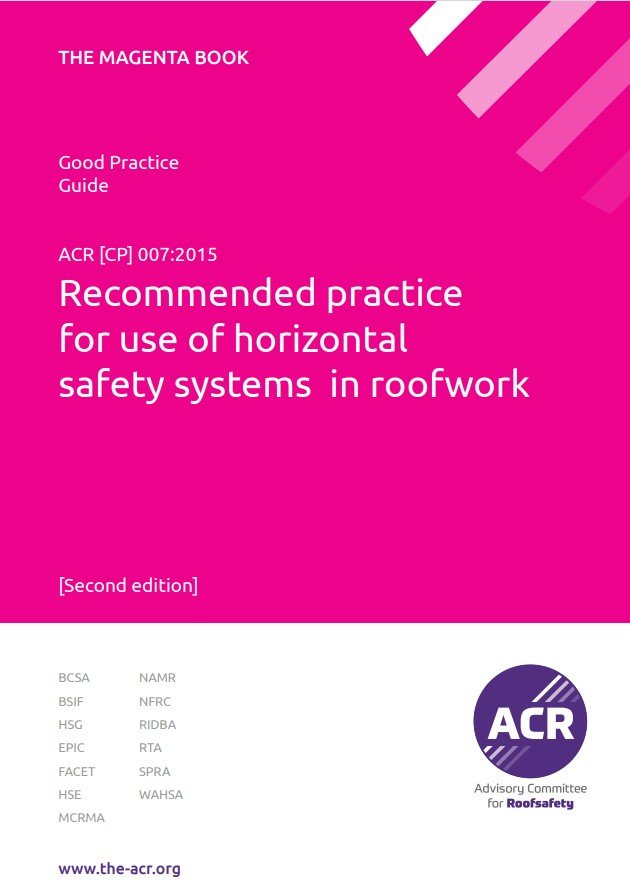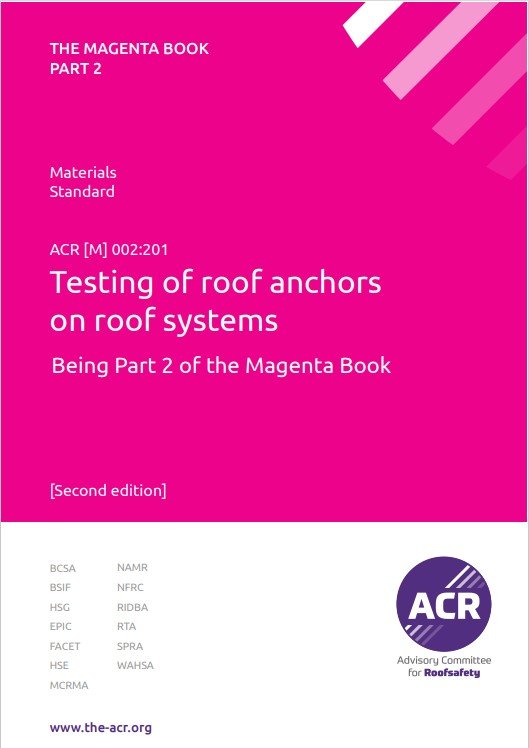EN 795:2012 & CEN/TS 16415:2013
Anchor devices
Devices intended to form the interface between the fall arrest system (harnesses, lanyards, retractable lanyards etc.) and the structure. These can be in the form of single bolts, slings, deadweight devices or anchor systems (rails or cables). EN 795: 2012 (1 user) & CEN/TS 16415: 2013 (2+ users) classifies anchor devices in the following manner:
- Type A – anchor device with one or more stationary anchor points, while in use, and with the need for a structural anchor(s) or fixing element(s) to fix to the structure
- Type B – anchor device with one or more stationary anchor points without the need for a structural anchor(s) or fixing element(s) to fix it to the structure
- Type C – anchor device employing a flexible anchor line which deviates from the horizontal by not more than 15° (when measured between the extremity and intermediate anchors at any point along its length)
- Type D – anchor device employing a rigid anchor line which deviates from the horizontal by not more than 15° (when measured between the extremity and intermediate anchors at any point along its length)
- Type E – anchor device for use on surfaces up to 5° from the horizontal where the performance relies solely on mass and friction between itself and the surface.
Dynamic Performance
Anchor devices are subject to a series of drop tests carried out on the device fixed as intended, in every intended direction of use and for the number of users claimed. This can mean a series of tests with the device fitted to a number of different substrates, as devices need to be installed as it would be used (often fitted to sample roof surfaces or structures). The tests required are dependent on the class of the device.
Static Strength
Whole anchor products are subjected to tensile tests. The test force is 12kN or 18kN if there is any non-metallic load bearing element. This force is then increased by 1kN for each additional user claimed. Tensile forces are applied and held for at least 3 minutes, to ensure the breaking strength of the product is in excess of the force specified by the standard.
Corrosion Resistance
Metallic components used in fall protection equipment are subjected to a neutral salt-spray test intended to prove a minimum resistance to environmental corrosion (specifically rust). Products are held within a sealed chamber filled with a salt-water mist, which can induce rust in unprotected metals. Products are subjected to 48 hours exposure and examined for rusting and function afterward.
source; SATRA
Sets out the guidelines for the safe use, inspsection, training and installation of horizontal safety systems, whilst not compulsory this is widely accepted as a best practice.
Sets out the guidelines to manufacturers for the testing criteria of horizontal safety systems and again this is not compulsorary these test methods are generally adopted by mainstream manufacturers and are accepted as a best practice , and stipulated by some roofsheet manufacturers.



